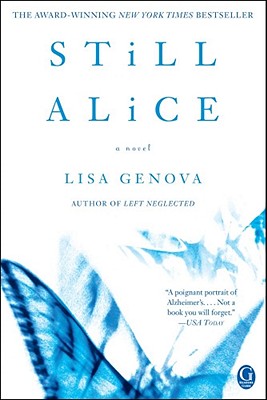Book review: Still Alice

Still Alice. By Lisa Genova. Toronto: Pocket Books (Simon and Schuster Inc.), 2007. ISBN: 978-1439102817. Paperback, 320 pages. $17.50.
This book haunts me. It is the realistic fictional account of a brilliant cognitive psychologist and Harvard researcher who has an international reputation in her study of the acquisition and mechanisms of language. At the age of 50, after episodes of forgetfulness (some uncomfortably familiar to me), she is diagnosed with early-onset Alzheimer disease. The story is written mainly from her perspective as she descends into her dementia from a life dependent on the superiority of her brain function. Its effect on her career, her spouse, her children, and her own perception of who she really is are beautifully and poignantly documented. The writing is excellent; the author is herself a PhD in neuroscience at Harvard; she has since been lauded by many Alzheimer groups for giving dementia a true and unvarnished portrayal. Reading the book has also opened my eyes to clinical facts of early dementia that I might otherwise have ignored, and by reading this story from Alice’s perspective, my compassion for those with dementia has increased manyfold.
—CV

Intrested in this article